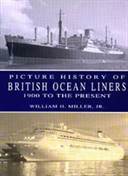A New Look at the World’s Most Famous Lost Ship
by Robert D. Ballard with Michael S. Sweeney
“I am returning to the site to show the world a better future for Titanic than the one she has suffered… priorities should not be the plundering of the Pyramids of the Deep, but instead their long-term care and appreciation.”…Robert D. Ballard.
Nearly 20 years after making the world’s most famous underwater discovery Robert Ballard came back to record dramatic images of the wreck and to expose evidence of new dangers that imperil the legendary ship. He chronicles early attempts to find Titanic including a 1953 mission using echolocation, a precursor of the sonar imaging of today and the technological miracles of 2004’s “million-dollar video game” that piloted Hercules, the remote controlled vehicle that captured astonishing digital video images of Titanic. “There’s not a lot of historical or archeological knowledge we could get [from Titanic], but there’s a heck of a lot to learn about science… Titanic is a great testbed for analyzing shipwrecks.” … NOAA Lt. Jeremy Weirich on the 2004 expedition.
The book’s five sections with stunning photographs throughout include: Finding the Titanic, To Salvage or to Save, Tools for Exploration, Return to Titanic, The Titanic Legacy. Ballard takes us back to April 14-15 1912, exploring the natural events, human misjudgments, the drama that contributes to the mythology, and the people who make Titanic’s story live on.
Images from Hercules… of artifacts that conjure scenes of human pathos… changes caused by natural deterioration and by human salvagers: Countless artifacts have been taken, submersible tracks criss-cross the site, and new damage reveals where manned mini subs have parked on Titanic to give passengers a better view. With diagrams, maps, archival images and digital photographs, Ballard documents what remains and what is lost and argues that Titanic and other great wrecks must be preserved as historic sites, “The deep sea is Earth’s biggest museum, yet there is no lock on the door.”
A story of adventure, science and controversy, “Return to Titanic” brings new dimension to history’s most infamous maritime disaster.
Size 9 x 8.5 inches, magnificent digital color illustrations throughout by National Geographic Society’s renowned photographers, 192 pages.





